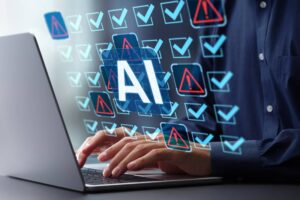Nvidia Aims to Increase DeepSeek’s AI Speed by 30 Times – Insights from CEO Huang

Nvidia’s Innovations in AI Processing at GTC 2025
Introduction to Nvidia’s Advances
In early January, the launch of DeepSeek’s R1 artificial intelligence program led to significant stock market fluctuations. Fast forward seven weeks, Nvidia, a leading player in the AI processing space, has positioned itself at the forefront of the growing economies of cheaper AI, particularly in response to DeepSeek’s influence.
Nvidia’s Vision and DeepSeek R1
At a recent event in San Jose, California, Nvidia CEO Jensen Huang showcased how their new Blackwell chip series can significantly enhance the capabilities of DeepSeek R1. By utilizing Nvidia’s latest open-source software, Dynamo, the company claims its GPU chips can process data at a staggering 30 times the normal speed for DeepSeek R1 in a data center environment. This performance boost is measured in tokens processed per second.
Ian Buck, Nvidia’s head of hyperscale and high-performance computing, explained that Dynamo can efficiently harness the potential of Nvidia GPUs, delivering 30 times the performance for reasoning models like DeepSeek without needing additional GPU chips.
How Dynamo Works
The Dynamo software, now available on GitHub, optimizes the distribution of inference tasks across up to 1,000 Nvidia GPUs. By allowing various segments of work to run simultaneously, it increases productivity and efficiency within a single machine’s operation.
- Cost-Efficiency: The software allows more tokens to be processed per task priced at $1 for each million tokens.
- Service Provider Options: Companies can either handle more customer queries or allocate more resources to individual users, creating opportunities for premium service offerings.
The Concept of AI Factories
Nvidia refers to substantial AI operations as "AI factories". According to Buck, these factories can enhance their services by charging higher premiums per million tokens and increasing the overall volume of tokens processed.
Addressing Investor Concerns
Nvidia’s approach aims to reassure investors worried about reduced computational needs arising from DeepSeek’s efficiency. Dynamo, when combined with Blackwell chips, can amplify revenue production by up to 50 times compared to older models like Hopper.
- Performance Enhancements: By modifying DeepSeek R1 to work with reduced data precision (using “FP4” or 4-bit floating points), Nvidia has minimized computational requirements while maintaining model accuracy.
New Developments Announced at GTC
During the GTC event, Huang introduced notable advancements for Nvidia’s hardware:
Blackwell Ultra Chip Series
The newest iteration of the Blackwell chip family, named "Ultra," boasts improvements, such as:
- An increase in DRAM memory from 192GB to 288GB.
- Enhanced inference performance when linked with Nvidia’s Grace CPU chip.
Innovations in Personal Computers
Nvidia has also branded its previously showcased tiny personal AI computer as DGX Spark, which utilizes a version of the Grace-Blackwell architecture. Reservations for this product are now open.
Updates to Desktop Computing
The latest DGX Station edition, built on the Grace-Blackwell Ultra framework, is set to accommodate 784 gigabytes of DRAM and marks a significant update from past models.
Networking and Collaboration Enhancements
Nvidia introduced the Spectrum-X network switch, which incorporates fiber-optic transceivers directly on the same chip, enhancing efficiency. Key features include:
- 200- or 800Gb/sec speeds
- Improved power efficiency and signal integrity
In collaboration with various research and tech organizations, Nvidia is establishing a quantum computing research facility in Boston, underscoring its commitment to blending AI with quantum technology.
Graphics Card Updates
Nvidia also refreshed its RTX graphics card lineup, highlighting:
- The RTX Pro 6000 Blackwell Workstation Edition with 96GB DRAM
- A server model designed for data centers
AI for Robotics and Medical Training
Expanding on its AI capabilities, Huang announced the Isaac GROOT N1, a pre-trained foundation model for humanoid robots. This model can assist in developing applications, particularly in healthcare, where training simulations for medical robots are needed.
Conclusion
Nvidia’s GTC 2025 marks a pivotal moment as the company reveals its strategies and products in the rapidly evolving world of AI. The emphasis on high-performance processing and innovative software solutions positions Nvidia as a key player in shaping the future of artificial intelligence technology.






